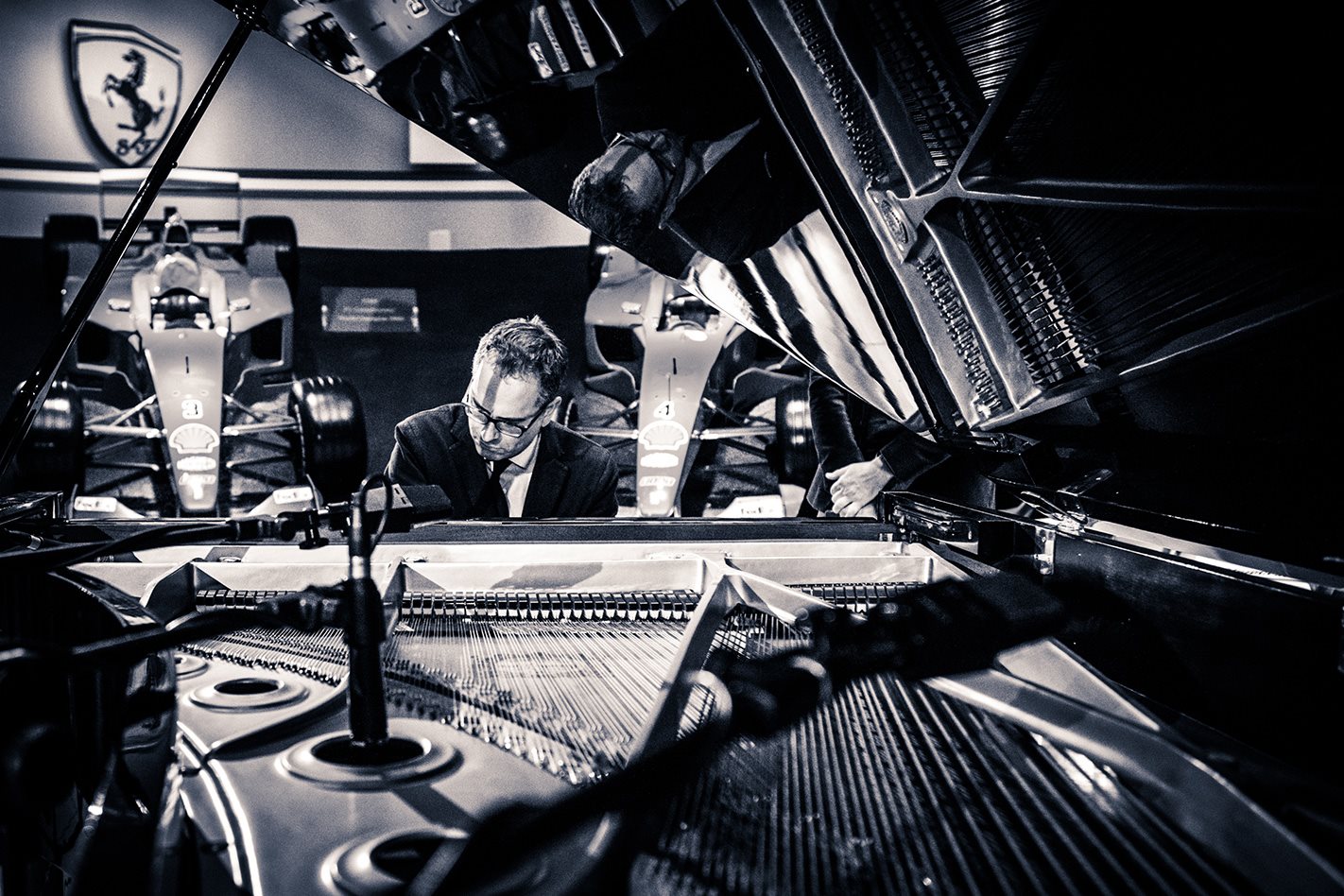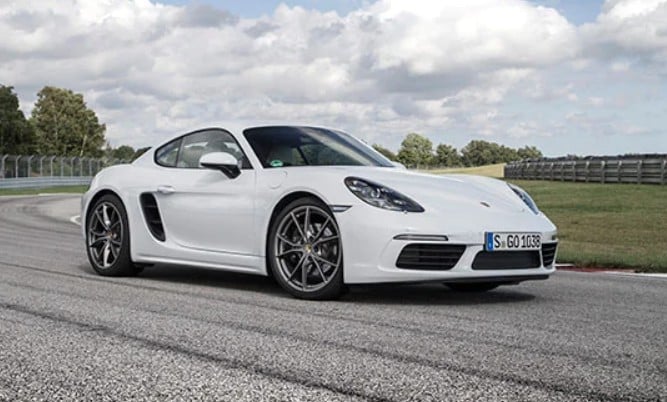First published in the September 2016 issue of Wheels magazine, Australia’s best car mag since 1953.
Ferrari design boss Flavio Manzoni talks enigmatically to Wheels about the warmth of form, the desire to be eclectic, detached volumes, and the inspiring music that powers the Prancing Horse’s styling future.
If you had to guess what sort of music inspires the slightly shouty design language of Ferrari, what would you go for? Thrash metal? Speed garage? Hard, loud rock? You might also think classical or opera, which would be close, and very Italian. But according to Flavio Manzoni, Ferrari’s vice-president of design, you’d be wrong. It’s more like jazz.
This is not his answer to a women’s magazine-style question (“What inspires you dahhling, what’s your muse?”) but a response to the fact that he cites music as an integral part of his design philosophy.
As inspired as he is by sculpture, art and architecture in his work – which includes La Ferrari, the 488 GTB, the FXXK and the Ferrari GTC4 Lusso he unveiled while in Sydney – Manzoni is equally moved by music.

“We recently had Cesare Picco – a famous pianist, especially in Japan – come in and we invited him to teach us how to create in real time, starting from a little idea and exploring the way to evolve it and transform it,” explains Manzoni, a keen pianist himself.
“This is what we actually do with cars; when we start the project, have an intuition about a particularly artistic solution to an engineering problem. Then the question is how to apply it to the car, in an artistic way.
“It’s a kind of discipline, music. When I play the piano I try to create a natural connection between my soul and the instrument. It’s not easy; you have to find the perfect state of mind to do that.

And the music that most inspires Manzoni and his team is the fiddly, tricky and seemingly unstructured world of jazz.
You can’t imagine a German car company using anything but Wagner’s Ride of the Valkyrie (aka the helicopter music from Apocalypse Now) or the Koreans anything but god-awful K-Pop. Indeed, Manzoni recently gave a copy of a book about jazz – “Harmonic Disorder it’s called; even the name is so beautiful” – to each of his staff.
“Jazz relates to the way our team works,” he enthuses, his foot tapping in his expensive Italian shoe.
“It’s beautiful how, in a jam session, all of the musicians interplay and they play around a theme, a harmonic structure, and the interpretation of each one can be completely different. Even if one musician makes a mistake, it’s no problem because this can just lead someone else to go off in a different direction and reinterpret the piece in a whole new way.

Manzoni, of course, has plenty of freedom to be chaotic and crazy – look at La Ferrari, for example – because of the company, and the country, he works in.
But he despairs at the lack of courage shown by his competitors, particularly those leaning heavily on retro styling or what he calls the “Russian-doll approach” to design.
“You know the ones, it’s just like looking at different sizes of the same thing,” he frowns. “I don’t personally like this.
“It’s a problem of the car industry globally. People end up thinking that the consistency of a brand comes from the repetition of the same elements, but I don’t think so. For me it’s the wrong approach. It’s not a creative approach.”
Nor is reaching for retro, he believes, dismissing it as “an effective way to compensate for a loss of image”.

“The problem is the ripple effects, because there are now so many examples of retro. So many air intakes and grilles now are fake, but this is not design, this is styling. It’s a totally different question.”
It sounds like working for Manzoni would be the dream of any car designer.
Originally trained in architecture, with a degree from the University of Florence, he has previously worked for Maserati, Fiat (the new 500 was his, so he admits to making retro sins of his own), Bugatti, Volkswagen and Lancia. All that, and establishing Ferrari’s own design team, before the age of 51. Not surprisingly, he’s already been voted into Italy’s car-design Hall of Fame.
Manzoni traces his talent to an upbringing that sounds classically Italian, built on “eclecticism” and “interdisciplinary culture”, or what we might call organised chaos.
“Since I was very young, I was really tending and wishing to become an architect, a designer, a car designer, an artist, a musician. I had probably a naive consideration about the lifetime as a very long time that allows you to realise a lot of things, many dreams.

He did dally with bricks, mortar and set-square for a while, designing villas in Sardinia among other buildings.
“These kind of studies and professional experiences gave me a lot of stimulations and, overall, the way to understand a true multidisciplinary approach in the design field. I believe that all of this is still giving me the opportunity to apply a true ‘lateral thinking’. It means to be able to maintain an open view, never stop learning.”
Manzoni was forced to bring all of his creativity and experience to bear on the look of the new GTC4 Lusso, a giant ‘shooting brake’ weighing almost two tonnes that must be able to carry four adults and yet still look Ferrari-sleek and sporty (a V12 engine with 507kW and a 0-200km/h time of 10.5sec help make it feel like a proper supercar).

“The Lusso is really just a Formula 1 car that you can drive on the highway, in incredible comfort, but as soon as you push on the accelerator it becomes a monster” Manzoni enthuses. “We didn’t want to cover or hide the diffuser, for example, because it’s the part that shows the F1 spirit of the car. It’s Formula One with an elegant suit.”
Manzoni, the first director of design Ferrari has ever employed (outsourcing to Pininfarina was all the rage in the old days), says the Lusso’s proportions also represent the spirit of Ferrari, and that he’s given the car an athletic treatment on the bodyside: “It’s not heavy, it’s very light, it’s very fast and dynamic.”
The GTC4 does look great side-on, but from the rear three-quarter its epic flanks and wide rear make it seem a bit like a station wagon. Ferrari attempts to distract you from this by presenting a rear end that’s both classic and modern, with twin lights echoing 355 and 456, along with the arc of the spoiler.
“We lowered the roofline and we decided to create a very small rear window; it’s about tricking your eye to make it feel smaller. But it’s also got big shoulders, a fantastic stance, and it sits very powerfully on the wheels.”

The difference between German design – think the Audi R8 – and the work of Italians (don’t mention the Lamborghini Huracan to him, but it’s a good comparison) is one that Manzoni is clear on.“Their way to think about form is cold; our way is warm,” he says.
“I tell my team, ‘Don’t think about the form for a moment, try to understand the technical soul of the car, and especially the feeling of the air’. It’s more artistic, I think, and we follow our instincts.
“Maybe it is also because we are surrounded by so many beautiful things, works of art, Michelangelo, so much in Italy. Perhaps we are a little unconscious about the richness of the ground in which we work. But in reality it influences our work, deeply.”
I put it to him that turning Ferrari’s near-perfect 458 into the 488 must have been an entirely different challenge, not unlike being asked to pop into the Vatican and spruce up the Sistine Chapel’s ceiling. This inspires a sonorous snort from Manzoni, who believes the FF replacement was the greater challenge.

He explains that a vehicle like the 488 allows you to “scoop out volume”, but he does so largely, and joyfully, with his hands. He can clearly see every curve of the car in his head, and he draws the Ferrari GTB with his finger in the air, expecting me to know exactly which shapes he’s describing.
“We start from the contents, from the substance, and when my team and I knew that the new car would be turbocharged, we knew that the only possible position for the radiators was on the two sides, and we were very excited by this because we could completely change the bodyside architecture. It was inspiring because it was about how to interpret this new sculpture under the skin.
“We also wanted to maintain a connection with the past, but it’s not nostalgic. The idea was to treat the rear fenders as detached volumes from the cabin. There are almost two wings coming out from the cabin and sitting on the fenders. It’s just…”
Then he searches, with the aid of an interpreter who only very occasionally assists him, through words like fabulous, sculpture and muscular before we all agree on “beautiful”.

Manzoni looked genuinely ill, lowered his eyes and rubbed his furrowed forehead. An Italian prime minister being asked about romps with underage prostitutes would have looked less disturbed.
“I would like to be a pianist, and I have two at home; one is a digital piano that is perfect, it can reproduce the best level, the sound of a grand piano being played in a concert hall; it’s beautiful,” he finally answered.
“I have also a Steinway. Now, can you guess which one I use more? That’s simply because on a real piano there are harmonics, there are waves. I play to feel these waves, they can touch the strings of the soul. A digital piano cannot do that.
“For me it’s the same; the Ferrari is a Steinway, not a digital piano.
“As for SUVs, we are not followers. We make sports cars, and if we are fighting every day to lower the centre of gravity in our cars, to put the engine down as low as possible, why would we make a huge car like this?”
This statement is followed by a derisive noise, one that even a digital piano could not replicate.
Frankly, it’s a good thing, for Ferrari and for the enjoyment of us all, that Manzoni has not become a professional pianist. The music he is weaving into his cars would be a terrible thing to miss out on.
Piano man
The highlight of Manzoni’s visit to Australia was visiting Sydney’s Opera House, a building he says has inspired him since he was a small child. Being well connected, he was allowed to play the piano in the concert hall, an experience about which he was ecstatic.
Is it possible that he thinks he missed his calling, and that playing piano for big audiences would be his dream job?
“I have played the piano in front of an audience very few times, but I have to confess that playing the piano is mostly a way for me to meet myself, to dialogue with my soul, with me,” he says.
“Beyond the technical training, the experience I really love to live is this relationship, the deep and interior speaking that I can create and share through the piano tool. It’s a sort of emotional transfer among what you feel and what you want to explain or transmit through music, sounds, notes, harmonies.





